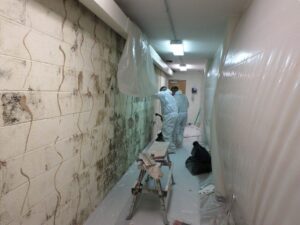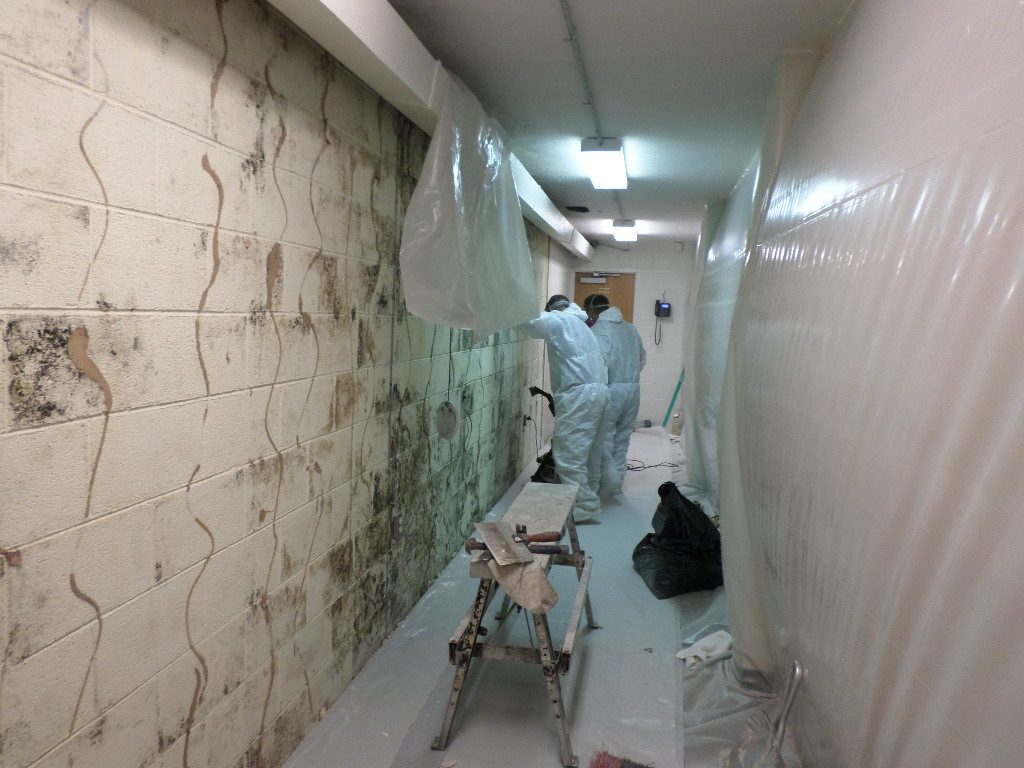The opportunities for moisture and water intrusion during the construction process are endless.
In the past, this posed fewer problems due to less “air-tight” construction. Today however, high levels of moisture can pose real issues to both builder and homeowner, especially in the green-building industry.
One common issue is the development of mold during the construction project. Prolonged exposure to mold can lead to structural as well as health-related problems, especially for mold-sensitive individuals who are more prone to developing allergic or asthmatic symptoms.
When mold is encountered at a job site, it is time to call a reputable mold-removal company with certified mold-remediation specialists to eliminate the mold quickly and efficiently. There are however, practical ways to prevent mold and eliminate it when it occurs.
Avoiding mold growth during construction requires constant attention to details, and certain best practices can help reduce the risk.
- Allowing for and maintaining proper drainage of water away from the foundation throughout construction is of utmost importance.
- During the framing phase of construction, high humidity levels or water intrusion into a construction project can create an ideal environment for mold contamination on framing members and insulation. Mold can grow quickly and appear within 24 to 48 hours after water intrusion. Water inside needs to cleaned up quickly and dried before progressing.
- Frequently inspecting attics, ceilings, walls, window openings, doors, floors, and basement and crawlspace areas for water stains or standing water is necessary. A small water intrusion can develop into a big problem if not taken care of properly. As construction progresses, drywall is very susceptible to mold growth in high humidity situations. Thorough inspection of building materials before and after they are installed is important to avoid problems down the road. If a mold problem is found during a construction project, it is important to eliminate the mold before continuing. Covering contaminated building materials does not prevent further mold growth. Cleaning with bleach is not enough.
- Applying mold-inhibiting products can be very effective when done properly and decrease chances of mold contamination. However, if it is not done correctly, or if there is prolonged exposure to moisture, these products may not be effective.

While building, watch for the following common pitfalls, which may create optimal growing conditions for mold.
- Sealed crawlspaces that are not properly dehumidified before vapor barrier installation, causing mold contamination of joists and insulation.
- Improper sealing of foundation walls, leading to water intrusion and mold infestation.
- Improper flashing of windows and doors, allowing water penetration into building materials and structural damage.
- Prolonged exposure of building materials to high humidity conditions, giving rise to mold growth.
- Installation of hardwood flooring over high moisture content subflooring, resulting in mold contamination and cupping of hardwood flooring.
- Undetected plumbing leaks in crawlspaces of homes under construction, bringing on illness after residents occupy the home.
A certified mold-remediation contractor uses a variety of techniques and products to complete structural drying and mold-remediation projects.
Inspection and monitoring with thermal-imaging cameras and measuring moisture contents of building products are methods used to identify the source and extent of water intrusion and to monitor progress. A mold-remediation professional will use equipment including heated drying equipment, dehumidifiers, high-efficiency particulate air (HEPA) vacuums, and HEPA filtration to eliminate both the conditions conducive to mold growth and the mold itself.
It is important for the mold-remediation professional to work with both the builder and the homeowner to determine what antimicrobial product should be used so that any concerns about chemical sensitivities are taken into consideration. Today, there are many environmentally safe products and methods suitable for individuals with chemical sensitivities. Finally, recommendations can be made regarding any sealers or coatings that may be needed.
Staying vigilant and taking these recommendations into account will ensure not only a healthy living environment from the ground up, but also peace of mind for both builders and clients.
What to Look For in a Mold Remediator
It is vital for contractors to retain a reliable and certified firm to perform mold remediation. Look for the following qualifications when choosing a company to eliminate and avoid future mold problems.
- Companies should carry adequate insurance coverage such as workers compensation, general liability and, most important, pollution liability coverage to protect builders and clients.
- A mold-remediation company should have certifications recognized by the remediation industry, such as mold-remediation certification from the ACAC (American Council for Accredited Certification) and/or IICRC (Institute for Inspection, Cleaning and Restoration Certification).
- It is beneficial for the remediation contractor to also be a North Carolina licensed general building contractor that knows and understands building science.
Aaron Carey is president of Precision Restoration Services and an ACAC-accredited Microbial Remediation Supervisor. He holds a Bachelor of Science degree in microbiology and a North Carolina general contractor’s license, and brings more than two decades of experience in mold remediation.
Joel Klopp is project manager and estimator at Precision Restoration Services, as well as an IICRC-certified Applied Microbial Remediation Technician and Water Damage Restoration Technician. He has more than eight years of experience in mold remediation and mitigation, 15 years as an North Carolina licensed broker and 30 years working in construction-related fields.
You can also view this article as it was originally published on page 24 of the 2017-18 edition of the directory.


